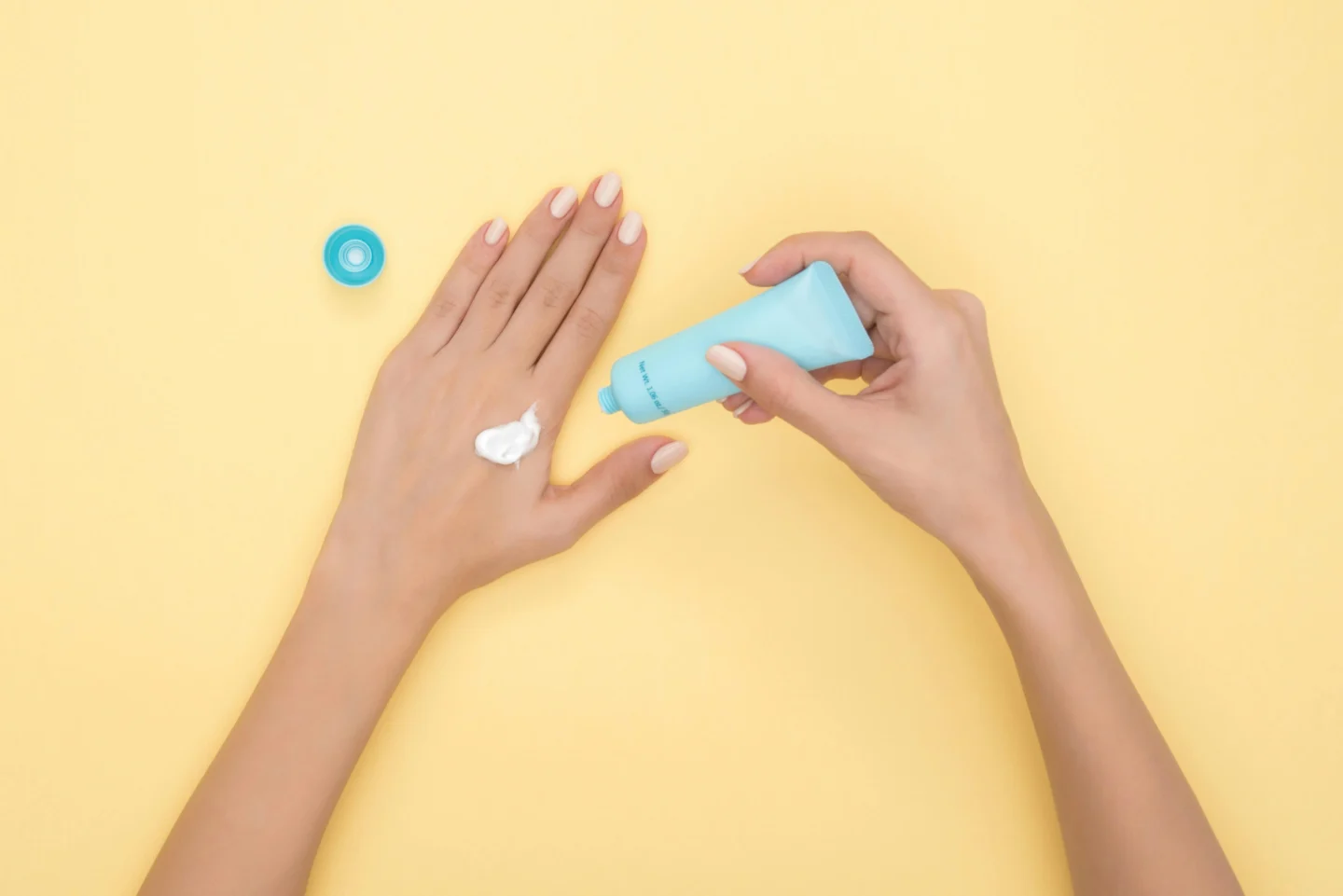
The information provided is for general information purposes only and should not be construed as professional advice. Any actions you take based on the information provided on the blog are at your own risk.
Here’s the updated sunscreen guide for 2025, because we know that whether commuting to work, running errands, or enjoying a long weekend outdoors, UV exposure remains the number one cause of premature skin aging and skin cancer.
And while the beauty industry is full of high-performing skincare products, none of them matter if you aren’t protecting your skin from sun damage.
This sunscreen guide is here to help you understand what works, what to skip, and how to build a sensible routine. We’ll walk through SPF numbers, chemical versus mineral filters, application tips, and the marketing language to pay attention to so you’re not wasting your money or risking your health.
The Real Purpose of Sunscreen (It’s Not Just to Prevent Burns)
Most people consider sunscreen a seasonal essential, something you grab for a beach trip or a summer hike. But the reality is that sunscreen should be a year-round staple in your skincare routine. Sun damage isn’t just about sunburns. Ultraviolet (UV) radiation contributes to:
- Wrinkles and fine lines
- Dark spots and hyperpigmentation
- Loss of skin elasticity
- Increased risk of skin cancer
In short, sunscreen is one of the best long-term investments you can make in your skin health and appearance.

Photo by Armin Rimoldi on Pexels
Understanding SPF: What It Actually Means
SPF stands for Sun Protection Factor, and it measures how well a sunscreen protects you from UVB rays, which are the rays responsible for burning your skin. But SPF can be confusing, so here’s a simplified breakdown:

Higher SPF values block slightly more UVB, but no sunscreen offers 100% protection. The most common mistake is assuming a higher SPF lasts longer; spoiler alert: it doesn’t. Reapplication is still necessary.
Why “Broad Spectrum” Matters
SPF only measures UVB protection, but your skin also needs defense against UVA rays, which penetrate deeper and cause long-term aging. That’s where the “broad spectrum” label comes in.
Broad-spectrum sunscreen protects against UVA and UVB rays. It’s essential if you want to protect your skin from sunburn and premature aging.
Here’s the difference at a glance:

Chemical vs. Mineral Sunscreens: What’s the Difference?
There are two main types of sunscreen formulas: chemical and mineral (physical). Understanding how each works can help you choose the right formula for your skin type and lifestyle.
Mineral Sunscreen (Physical)
Mineral sunscreens use active ingredients like zinc oxide or titanium dioxide to create a physical barrier that reflects UV rays on the skin.
Pros:
- Offers immediate protection
- Less likely to cause irritation
- Reef-safe and safe for pregnancy
- Typically better for sensitive skin
Cons:
- Thicker texture
- It may leave a visible white cast, especially on medium to deep skin tones
Best for: Sensitive skin, children, post-procedure skin, and anyone concerned about chemical filters.

Photo by Sora Shimazaki on Pexels
Chemical Sunscreen
Chemical sunscreens use active ingredients such as avobenzone, oxybenzone, and octinoxate to absorb UV radiation and convert it into heat.
Pros:
- Lightweight and more wearable under makeup
- Easier to apply without leaving a white residue
- Often has a more elegant finish on the skin
Cons:
- It can irritate, especially for reactive skin types
- Some ingredients raise environmental and health concerns. Oxybenzone, in particular, has been shown to disrupt hormones in the body and has been found in breast milk, urine, and blood samples
- Requires 15–20 minutes to become effective after application
Best for: Daily wear under makeup, normal to oily skin types, and people who want a more cosmetically elegant finish.

Photo by Antoni Shkraba on Pexels
Are Chemical Sunscreens Safe?
The safety of chemical sunscreens has been a topic of debate in recent years. While dermatologists consider many formulas safe and effective, some ingredients, especially oxybenzone and octinoxate, have raised concerns.
Potential risks include:
- Hormonal disruption (based on some animal studies)
- Skin irritation in sensitive individuals
- Contribution to coral reef damage, prompting bans in places like Hawaii and parts of the Caribbean
If you’re concerned, look for “reef-safe” formulas or switch to mineral sunscreens with non-nano zinc oxide.
For more data visit the FDA’s website. Here I’ll leave you this article and this other one about the proposed order for specific active ingredients found in most chemical sunscreens.
How to Decode a Sunscreen Label
Shopping for sunscreen can feel like decoding a foreign language. Here are the key terms you should understand:

Key Questions to Ask Before Buying Sunscreen
Not all sunscreens are created equal. Before buying a new product, ask yourself the following:
- Is it a broad spectrum?
- Does it have SPF 30 or higher?
- Will it work with your skin type and tone?
- Is it reef-safe, especially if you’ll be swimming?
- Is it fragrance-free if you have sensitive skin?
- Can it layer well under makeup?
Quick Comparison Chart: Chemical vs. Mineral Sunscreen

Okay, now that you know the basics, I hope you find this sunscreen guide valuable and that you keep these resources in mind the next time you are looking for an SPF.
Remember, consistent sun protection is vital for maintaining healthy, youthful skin and reducing the risk of skin cancer. So, lather up and enjoy the sun responsibly!
Coming up next, I’ll be sharing some of the sunscreens I’ve been using. Let me know in the comments below which are your favorites and if you prefer using mineral or chemical SPFs.
xx,

FAQs Section
Q: What does SPF measure in sunscreen, and why is it important?
A: SPF measures a sunscreen’s ability to block UVB rays, which cause sunburn and skin cancer. A higher SPF provides more protection against UVB radiation.
Q: What’s the difference between UVA and UVB rays, and why is broad-spectrum protection crucial?
A: UVA rays cause premature aging and skin cancer, while UVB rays cause sunburn. Broad-spectrum sunscreen is essential to protect against both types of radiation.
Q: What are the pros and cons of physical/mineral sunscreens?
A: Pros include natural ingredients and immediate, effective protection. Cons may include a thicker consistency and potential white cast on the skin.
Q: What are the pros and cons of chemical sunscreens?
A: Pros include being lightweight and easy to apply with broad-spectrum protection. Cons may involve potential skin irritation, absorption time, and environmental concerns.
Q: Are chemical sunscreen ingredients safe, and what should I be aware of?
A: While deemed safe by the FDA, some ingredients like oxybenzone and octinoxate have potential health and environmental concerns. It’s essential to be aware of these factors and make informed decisions
Photo by Philippe Murray-Pietsch on Unsplash
